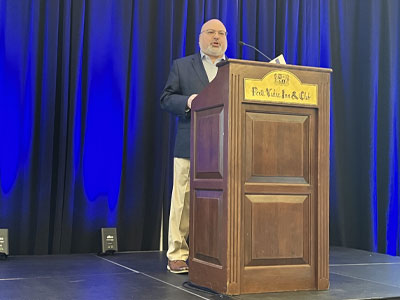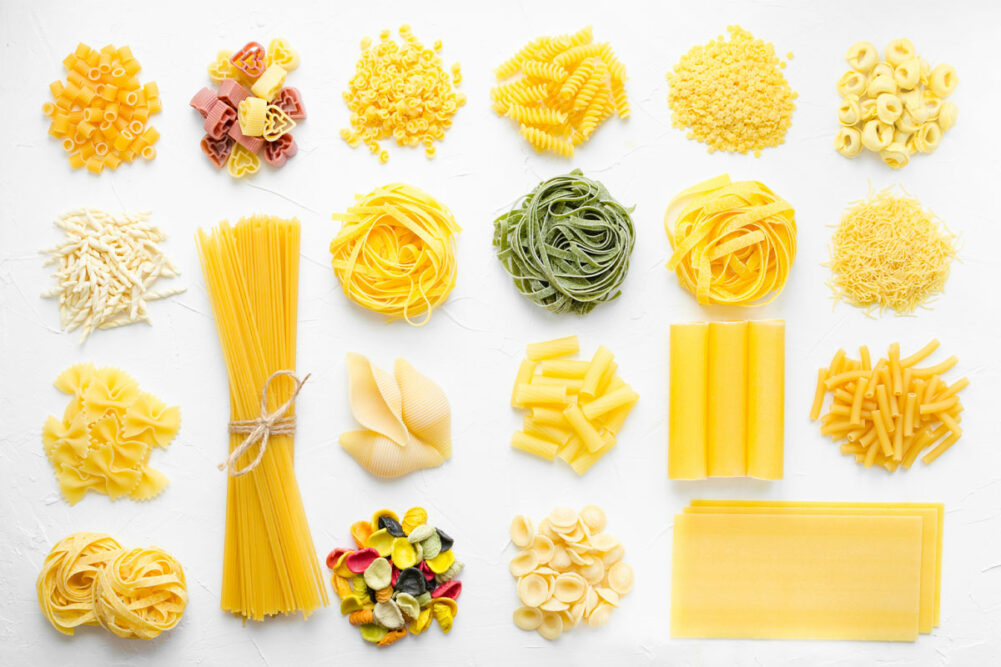PONTE VEDRA BEACH, FLA. — When the US government undertook a project to modernize the standards of identity for foods sold in the United States, the National Pasta Association government affairs committee jumped at the opportunity to begin a conversation that would allow them to help rewrite the federal definition of pasta in the United States, which had not been updated since it was written around 80 years earlier.
NPA government affairs committee chairman Tom V. Quinn, executive vice president and chief operating officer of Nuovo Pasta Productions Ltd., Stratford, Conn., updated association members on the committee’s recent work on the standards March 20 at the group’s annual meeting.
“We thought it was time to look at this and update it for the membership and the benefit of the folks in this industry,” Mr. Quinn said. “There actually was not really a pasta standard of identity (SOI) — it was considered merely a macaroni noodle, because that’s what there was at the time it was written.”
The Food and Drug Administration undertook the modernization of the standards with a staff of 10 to handle more than 200 categories, Mr. Quinn said, thus were grateful and receptive to the NPA’s guidance.
“They controlled the regulations, but we controlled the knowledge, and that was really a benefit,” he said.
The NPA approached the modernization of the standards with four objectives:
- To remove the upper limit of vitamin and mineral content in “enriched noodle” and “enriched macaroni” products while maintaining minimum requirements;
- To permit modified macaroni and noodle products with qualified ingredient names;
- To modify existing standards to remove the shape requirement for SOI compliance;
- And to establish an SOI for enriched semolina and enriched durum flour.
The upper limit on vitamin and mineral content had a notable economic impact on NPA manufacturer members because “you can only angle things so far, especially when you’re using fresh ingredients,” Mr. Quinn said. “A fixed level of nutrients and throw in a wild card of crops and weather, and it becomes a problem.”
 Tom V. Quinn, Nuovo Pasta Productions, Ltd. Photo: Sosland Publishing Co.
Tom V. Quinn, Nuovo Pasta Productions, Ltd. Photo: Sosland Publishing Co.Allowing other flour ingredients was spurred by changing consumer demand for such characteristics as gluten-free and alternate ingredients such as lentils, chickpeas and even artichoke.
The shape requirement modification came about as “the NPA had identified more than 600 pasta shapes, but the current government standard had only three: macaroni, spaghetti and vermicelli,” he said. “Nothing else qualified.”
The FDA was receptive to all of the NPA’s overtures on the matter, and requested more information in some cases, such as the nutrient levels that routinely exceed the existing maximum. The administration indicated a citizen petition might be needed to eliminate the shape requirement. As for allowing alternate ingredients, the FDA said its draft guidance on labeling of plant-based foods could provide labeling guidance for modified pasta products. And regarding an SOI for enriched semolina and durum flour, the FDA requested a written explanation of the NPA’s request.
“The industry follows where the consumers bring them,” Mr. Quinn said. “The reason there are so many shapes in the pasta aisle is not because we thought it would be a good idea, it’s because the consumer was looking for more creative ways to make food, more creative ideas within our industry. It’s not because there’s a standard or no standard. The consumer said ‘I want to have a bowtie.’ That’s what’s driving it.”
As it stands today, the NPA’s next steps and priorities are wrapping up the information dossiers for FDA submission to lay the groundwork to eliminate the upper vitamin and mineral content limits. Phase two entails keeping open the conversation with the FDA because the business will continue to evolve and grow.
Mr. Quinn encouraged NPA members to get involved with the government affairs committee to help direct the association’s involvement with the regulations that govern the industry.
“There’s 10 to 12 spots on the committee, and always room for one more,” he said. “If you’re looking to get involved, the best way to get involved is to get involved so we can hear your voice. Speak up because it’s impossible to change things from the sidelines. You’ve got to be on the field.”





